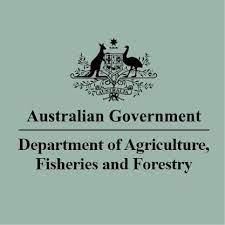Australia: Biosecurity Updates on Pets and Reporting Requirements
Australia’s Department of Agriculture, Forestry and Fisheries has implemented new requirements for Pets entering the country and published a new two-page checklist of Biosecurity regulations for anyone intending to arrive in Australia or its associated territories.
Published 11 months ago
Sherry Seaman, a spokesperson for the Department of Agriculture, Fisheries and Forestry, has shared the following information with Noonsite to assist the yachting community in preparing vessels for biosecurity inspection on arrival in Australia.
Quick Reference
The Starting on the Right Tack checklist, is a quick reference checklist supported with the more detailed, text-based, non-commercial vessel arrival biosecurity reporting requirements for yachts and private superyachts on the DAFF website.
“We have also published an industry advice notice and the non-commercial vessel webpage has been updated, clarifying the department’s position on animals arriving in Australian territory on non-commercial vessels”, says Sherry.
Now, all animals arriving in Australian ports, or transiting within Australian waters onboard a non-commercial vessel, without a valid import permit are not permitted. An animal is considered to have been imported to Australia once the animal is within 12 nautical miles of Australian territory.


Website updates
The department has also recently revised its website for non-commerical vessels following community feedback, to explain more clearly how to report your impending arrival in Australia.
Sherry stresses that yacht owners must “report to Department of Agriculture Biosecurity officers (DAFF) as well as the Australian Border Force. We are two different Australian Commonwealth departments with different focus, legislation and reporting requirements.”
Updated information includes:
- details of the Biosecurity Regulation 2015 including section 48 which outlines pre-arrival reporting timeframes and what must be reported.
- amended port details that outline where a vessel can arrive and how to report vessel arrival to DAFF’s biosecurity offices.
- information about MARS and the Conveyance Arrivals Modernisation (CAM) program.
- Amendment of the term ‘brokers‘ to ‘customs brokers’.
- Updated compliance and enforcement information is published under “An overview of the inspection process” on the non-commercial vessel webpage.
- The Vessel Contacts – DAFF section on the webpage has all of DAFF’s port offices contact details (24/7) listed and it is regularly reviewed.
- A definition of waste and examples of what types of goods they are, has been added to section 7: managing biosecurity risk including waste under the “An overview of the inspection process”.
- Updated information on BICON which houses the Australian Government’s biosecurity import conditions database. It is accessible by anyone and will help determine what import conditions exist and if an import permit is required for particular goods e.g. food, animals and personal items such as articles purchased from pacific islands (hats, wooden objects).
Sherry concludes; “We will continue to revise the non-commercial vessels webpage so please check in regularly. You may need to refresh the page to see the latest changes”.
……………………………..
Related News:
……………………………..
Related Links:
- DAFF – Starting on the Right Tack Checklist
- DAFF – Vessel Contacts
- DAFF – Managing Biosecurity Including Waste
- DAFF – Non-commercial vessels (yachts) arriving in Australian Territory with animals on board.
……………………………..
Find out all news, reports, links and comments posted on Noonsite, plus cruising information from around the world, by subscribing to our FREE monthly newsletter. Go to https://www.noonsite.com/newsletter/.
Related to following destinations: Abbot Point, Adelaide, Albany, Augusta, Australia, Bowen, Brisbane, Broome, Bunbury, Bundaberg, Burnie, Cairns, Carnarvon, Ceduna / Thevenard, Coffs Harbour, Dampier, Darwin, Derby, Devonport, Eden, Esperance, Exmouth, Fremantle & Perth, Geelong, George Town, Geraldton, Gladstone, Gold Coast, Gosford, Gove, Groote Eylandt - Milner Bay, Hastings, Hobart, Kettering, Kingscote - Kangaroo Island, Launceston, Lord Howe Island, Lucinda, Mackay, Manly, Melbourne (Australia), Mooloolaba, Mourilyan Harbour, New South Wales, Newcastle and Port Stephen, Northern Territory (Australia), Onslow, Port Botany and Kurnell, Port Douglas, Port Hedland, Port Hinchinbrook, Port Huon, Port Kembla / Shellharbour, Port Lincoln, Port Pirie, Port Walcott, Portland, Queensland, Robe, Scarborough (Australia), South Australia, Stanley (Tasmania), Strahan, Sydney, Tasmania, The Whitsunday Islands, Thursday Island, Tin Can Bay and Hervey Bay, Townsville, Triabunna, Victoria, Wallaroo, Weipa, Western Australia, Whyalla, Wyndham Harbour, Yamba, Clarence River, Yeppoon


